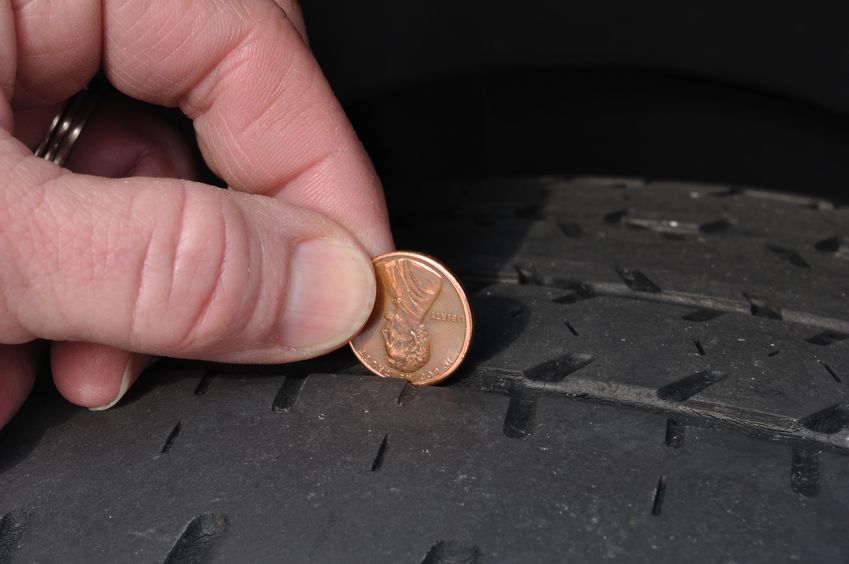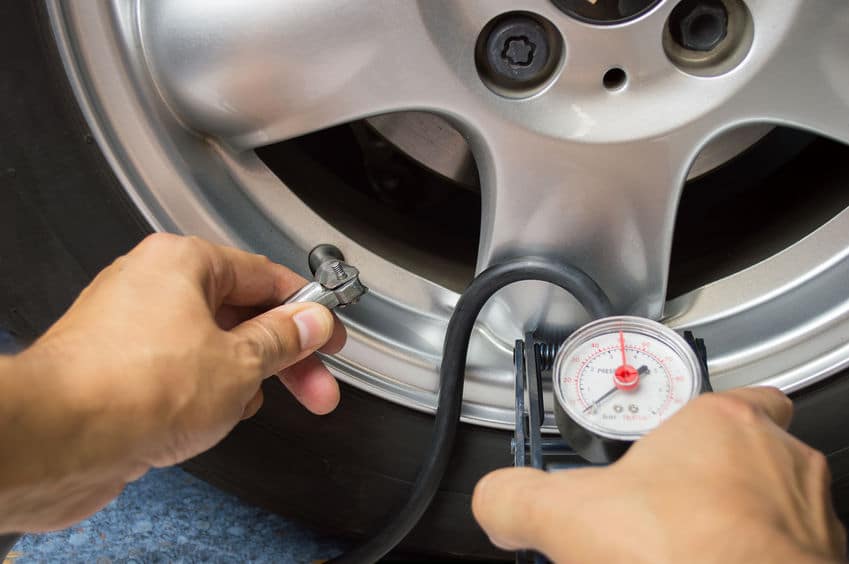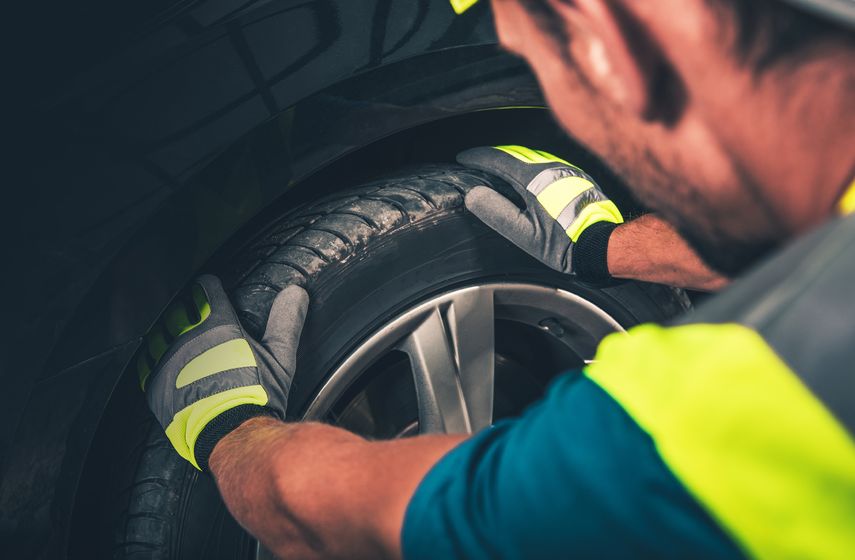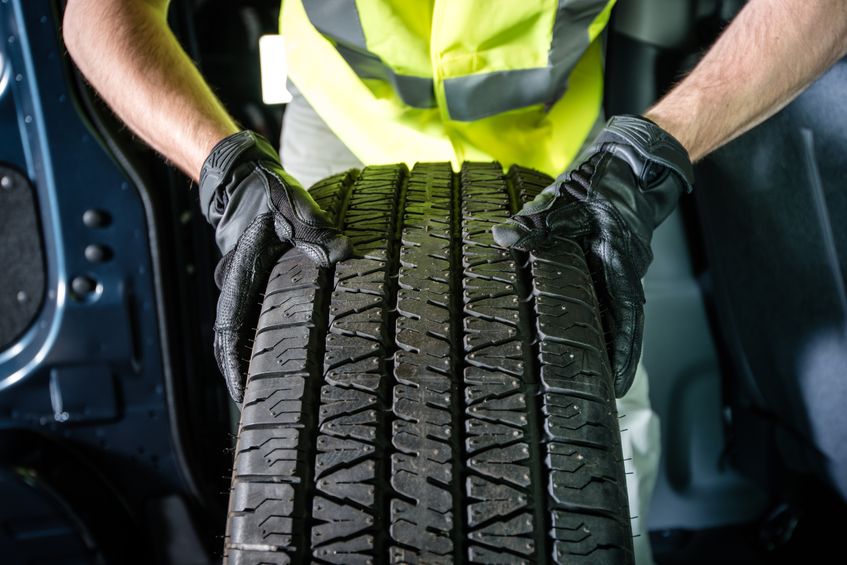Poor tire conditions can contribute to vehicle accidents. According to the National Traffic Safety Administration, poor tire conditions play a large role in car crashes. Here are some different ways tires can contribute to motor vehicle accidents:
- Tire degradation— bald/under-inflated tires
- Tire failures— blowouts, tread separations, wheel separations
Our cars let us know when there are internal parts in need of repair, but they don’t always let us know our tires are road-ready or when they are not safe.
Tire-related crashes can be avoided by some preventative and regular maintenance. How are your tires?
Check out 5 tire safety tips that every motorist should know.
Tip #1: Check your tire tread depth.
Low tire tread can easily cause a motor vehicle accident, especially in harsh road conditions like rain or snow. Tire tread is the vertical measurement of your top tread rubber to the bottom of your tire surface. Tire tread is measured in 32nds of an inch.
What is the ideal tire tread?
The ideal tire tread is between 10/32 and 2/32.
How to Measure Tire Tread
It can be difficult to measure tire tread with a ruler. Instead, you can get a tread depth gauge or try the old penny trick.

The Penny Trick
- Insert a penny upside-down into a random tire tread.
- Can you see all of Lincoln’s head? If so, it may be time to replace your tires. This means your tread is under 2/32 inch, which is considered very low!
Tip #2: Make sure your tire pressure is at the recommended level.

Driving with low tire pressure is very dangerous and can cause motor vehicle accidents. When tires are underinflated, the friction between the tire and road increases. This causes heat to build up, which can cause tread separation and tire blowouts.
Typically, our cars indicate when the tire pressure is low, but it’s important to check for yourself, as well.
“Where can I find my recommended tire pressure?”
There are a few places to find your recommended tire pressure value: the owner’s manual, inside the driver’s side door, under your trunk lid, or in your glove compartment.
Tip #3: Rotate your tires.

We recommend to make sure you rotate your tires every 6,000 to 8,000 miles to make sure your tires wear evenly.
Tip #4: Check your tire pattern.
Take a look at your tires and see if you notice any uneven patterns. Check specifically for wearing in the middle of the tire or on the end. This could indicate that your tire is overinflated or underinflated.
Tip #5: Invest in good tires.
There’s a big difference between good and cheap tires, and it can make all the difference when it comes to road safety. It’s important to invest in quality tires based on durability and tread.
At Marietta Wrecker Service, we understand the importance of car safety, which includes making sure your tires are safe. If you are experiencing a roadside emergency, call Marietta Wrecker Service at (770) 422-6614 for quick emergency roadside service.
